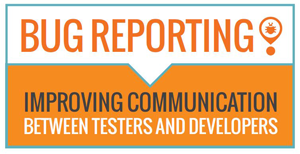 Mobile apps are ubiquitous these days, but not all of them work perfectly. What can go wrong with mobile apps? Plenty.
Mobile apps are ubiquitous these days, but not all of them work perfectly. What can go wrong with mobile apps? Plenty.
Users want to be able to use apps without any issues, but if an app isn’t properly tested before it’s released to the public, and the app doesn’t do what it’s intended to do, users get frustrated.
Apps can compromise the user experience when questions arise such as: “Why can’t I scroll or search on this thing?” or “Why is this video playing when I didn’t ask it to? How do I make it stop?!?”
Furthermore, mobile apps sometimes make it very hard for users to read content because the text and/or graphics are not sized properly. What’s even worse is when users can’t find (or figure out) how to navigate the app. In addition, clutter is a no-no yet many apps are cluttered. Simplicity is always better than clutter.
Is there such a thing as too many options on an app? Sure. People have limited time and limited attention spans; they want things “quick and easy.” App users also get irritated if and when a mobile app takes “a long time” to load and/or function.
Mobile apps need to be tested before end users try to actually use them; that is why companies like Beta Breakers exist— to conduct proper testing, ensure apps work as intended, and provide an informative user experience.
Companies like Beta Breakers check apps to make sure they don’t crash or freeze up. They also make sure they’re easy-to-use, aren’t overloaded with too many features, have clear navigation, and display well across multiple platforms and devices. It’s better to have a well-tested, properly-working mobile app than to release something to the public with flaws!

 With Experience in Quality Assurance & Testing Desktop Software, Mobile Apps, Websites & Web Applications for Nearly 30 Years, Beta Breakers has become the Premier Software Quality Assurance Labs and Application-Testing Provider -
With Experience in Quality Assurance & Testing Desktop Software, Mobile Apps, Websites & Web Applications for Nearly 30 Years, Beta Breakers has become the Premier Software Quality Assurance Labs and Application-Testing Provider - 


Can you be more specific about the content of your article? After reading it, I still have some doubts. Hope you can help me.